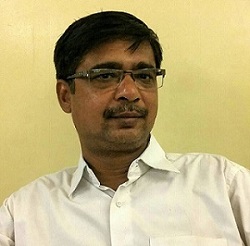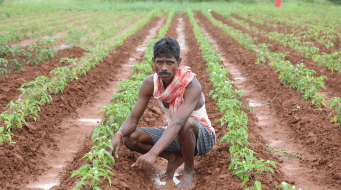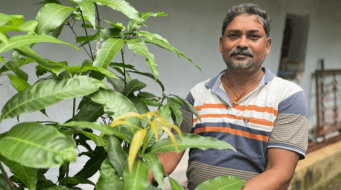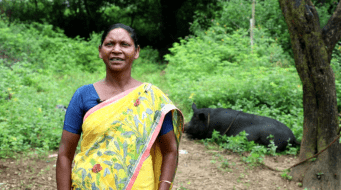By Vikas Prakash Joshi & Arjuna Srinidhi
According to some statistics, 68% of India’s land is prone to drought, 60% to earthquakes, 12% to floods and 8% to cyclones, making India one of the most disaster prone countries in the world. [1] The incidence of such natural disasters is also on the rise in India, as a paper by Anand Patwardhan and Ajay Singh point out (Patwardhan et al, 2012). The paper clearly shows that between 1978 and 2006, there has been a huge increase in the number of reported extreme weather incidents, from 80 in 1978 to 460 in 2006. Floods constitute the major share of the events. [2]
These statistics underscore the need for integrated disaster risk reduction plans at national, state and local levels. Recognizing this need, the Government of India launched the 10-point agenda for Disaster Risk Reduction (DRR) in June 2016 and a national plan for DRR in March 2017, at Cancun, the first country to do so. [3] As a step towards a more resilient India, the Union Home Ministry had done a comprehensive risk assessment of 640 districts in India, creating the first ever National Risk Index.(4)
However, the chaos after the recent floods in Kerala and before that in Tamil Nadu, Telangana and Andhra Pradesh in 2015, show that India’s DRR strategy is still very much a work in progress. At a time like this, the conversation about Disaster Risk Reduction, Disaster Risk Management (DRM) and Disaster Management (DM) has never been more necessary. We are delighted, therefore, to bring you an interview with Mandar Vaidya, a senior humanitarian and development professional with RedR India, and someone with over 20 years of experience in DRR.

About Mandar Vaidya
Mandar Vaidya has over 21 years of work experience and understanding of Disaster Risk Reduction, humanitarian principles, public health in emergencies, and people centered development. He has contributed in the processes of networking with humanitarian and development actors across country and developed and managed innovative projects in community DRR, mainstreaming DRR and humanitarian capacity building. Mandar has also led RedR India’s technical support projects on contingency planning, humanitarian capacity building and mainstreaming DRR in the past ten years. He is currently playing a key role in RedR India’s knowledge building process and in developing knowledge products in the form of training modules, IEC material, frameworks and guidelines.
We speak to him about the current state of DRR in India, its future prospects and what needs to done to make India more resilient to disasters of all kinds.
How do you define disasters? What do they encompass?
Traditionally, the dictionary meaning of disasters refers to events that cause damage economically or loss of life. But I prefer a broader concept i.e. any event that causes suffering or harm to vulnerable sections of people. There are many examples of small scale recurring events causing damages to environment, property and livelihood assets, forcing people to displace from their own areas. These are generally not announced as disasters. For example, Majuli in the Brahmaputra river in Assam was the largest river island. But this island is slowly disintegrating and getting swallowed by the river every year. In 2015-16, there was a drought in Marathwada which led to large scale population movement of people from rural to urban areas. We need to shift our definition of disasters and expand it to include climate-induced displacement too. Such displacement from rural to urban, puts people in more risk prone areas like slum settlements which can be easily affected by any hazards. Disasters encompass all such events that cause suffering to people, especially most vulnerable sections, be it small scale or large scale.
What is the current state of DRR in India and the various policies? Where are we lagging behind?
At the national and state level there is a growing awareness and acknowledgement that both DRR and Disaster Risk Management must be taken seriously. I also feel that resources are available. But on the flip side, if we look at the current Disaster Management Act in India, that was passed in 2005, the spirit of this act must flow to the grassroots of society. This has not happened yet. At a local level, in terms of communities, civil society organisations and government, there is a deep need for capacity building to deal with disasters.
What is the difference between DRR, DRM and DM? How do you distinguish these concepts from each other?
DRR is a broader framework that will help communities work towards resilience. Disaster Risk Management is a process that bridges policy and practice so that the goals of DRR can be achieved. Disaster Management is about effectively responding to a disaster in a short space of time. DRR and DRM are proactive concepts while DM is a reactive one.
How do you assess the government of India’s policy in terms of disasters?
If we look at it from a national point of view, the National Disaster Management Authority (NDMA) has framed guidelines and policies. But the NDMA is essentially a policy making body; its mandate is for capacity building and not decision making. The district disaster management authorities have much greater scope in terms of making decisions. But every district is vulnerable in its own way, depending on its topography, geography, climate and ecology. So the government should now focus on strengthening the district-level disaster management processes. In terms of government functionaries, there is a lot of motivation to put in place mechanisms to deal with disasters.
Which states in India are role models in terms of DRR and DRM?
Bihar, Gujarat and Odisha have all distinguished themselves on a national level for their proactive steps in tackling disaster. Bihar is working to mainstream DRR in every government scheme and policy, which is the first of its kind of any state in India. Maharashtra has a disaster management plan for every district.
Has Sendai Framework influenced India’s Disaster Management Policy?
The Prime Minister has announced the 10-point agenda for DRR in November 2016, which has been adopted by the Union government. This 10-point agenda has been deeply influenced by the Sendai Framework.
Since independence, disaster management has been growing as a field at various levels. How do you see this growth?
Things have changed substantially since independence. There was a time, I recall, when government officials would say that ‘As and when a disaster occurs, we would decide what to do’. It was considered inauspicious to talk about disasters happening in future. Nobody wanted to consider that possibility. But in my experiences across the country, people now consider DRR a very crucial area of work and want to proactively work towards reducing and planning for it.
What should be the priorities for DRR going forward?
The first priority should be comprehensive risk analysis at local i.e. down to village level. Climate change and social vulnerabilities need to be integrated into DRR. The information about vulnerabilities and disaster risk management at village level needs to be translated into the relevant Indian languages and easily accessible to the masses. We need a new risk analysis framework which has a climate change lens.
There also needs to be a people-friendly rehabilitation policy. We need to map places in India of extreme vulnerability to climate change, and prepare rehabilitation plans for the people who live there.
Third, local NGOs at the grassroots need to be strengthened in terms of both funding and capacity building. Bigger NGOs and governments should help these local NGOs to become stronger and more capable.
What are the differences in DRR between slow onset disasters like drought and fast onset disasters like cyclones?
Strategies will be the same for both of the above. But the actions will be different. The strategy in both the cases will be to ensure that every infrastructure built should be resilient.
What role do you see organisations like WOTR playing in the DRR space?
I have known WOTR since 1997, during the days of the Indo German Watershed Development Programme. Organisations like WOTR have been active in promoting diversifying livelihoods, especially in times of drought as well as promoting quality and quantity of water. WOTR and other similar institutions can play a major role in capacity building, and helping people with diversifying livelihoods.
What are your predictions for the field of DRR and DRM for the future?
India is rapidly becoming a more urban country. We have rising rural urban migration and expansion of existing urban centres. It may noted that by urbanisation, I don’t only mean physical expansion of urban areas, but also changes in lifestyle. Thus, the urban areas will be the next major focus area for the government and other stakeholders, when it comes to DRR.
Conclusion
In conclusion, we can say that all disasters teach lessons, if we are prepared to learn from those lessons. The devastating floods in Kerala, and the ones prior to that in other parts of southern India teach us that ‘extreme rainfall events’ may become more and more frequent in times to come, thus forcing us to integrate a climate change lens into the way we plan our cities and our disaster management planning. We also have to prepare ourselves to deal with the effect of extreme weather events. For the time being, Kerala will have to deal with its immediate relief needs. In the longer term, however, as we grapple with increasingly unpredictable weather, stopping and reversing some of the environment damage that has led to this situation should be the priority. This holds true not just for Kerala and south India, but for a rapidly urbanizing world as a whole.
For futher reading:
- https://theconversation.com/keralas-monsoon-lessons-from-recent-floods-in-india-101883
- https://www.livemint.com/Opinion/NaP99WBJWe9AWnvK2BtQwI/Kerala-lessons-In-a-rapidly-urbanizing-India-its-time-to.html
- https://www.financialexpress.com/opinion/whats-next-for-flood-devastated-kerala/1295523/
- https://www.hindustantimes.com/analysis/let-the-kerala-floods-not-be-another-tsunami-story/story-zSsDZY2CRoSFKdlPstqPlN.html
- https://www.thehindubusinessline.com/opinion/kerala-floods-man-made-or-natures-fury/article24762090.ece
- https://www.livemint.com/Leisure/koMFWn56xDpL40aMTjTJCM/What-Kerala-can-teach-us.html
- https://economictimes.indiatimes.com/news/politics-and-nation/keralas-devastation-why-cant-we-learn-from-others/articleshow/65604909.cms
- https://www.indiatvnews.com/news/india-kerala-floods-483-people-killed-in-deluge-more-than-14-lakh-housed-in-relief-camps-cm-pinaryi-vijayan-tells-special-assembly-session-460691
- http://www.newindianexpress.com/magazine/2018/aug/26/a-sea-change-1861858.html





